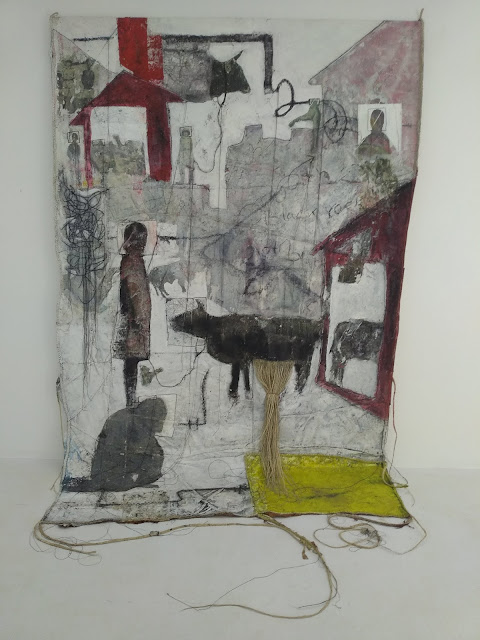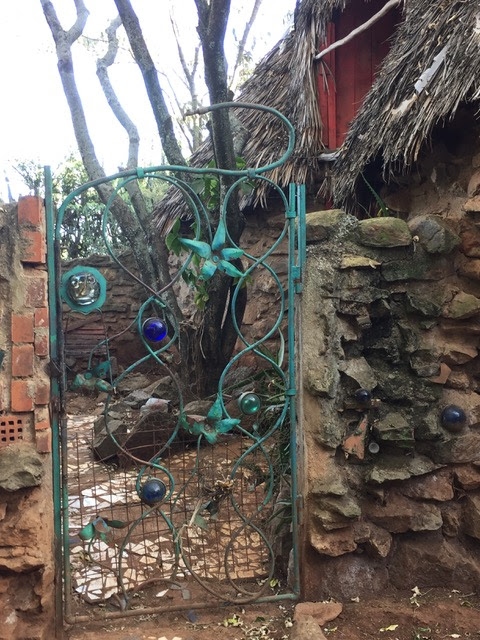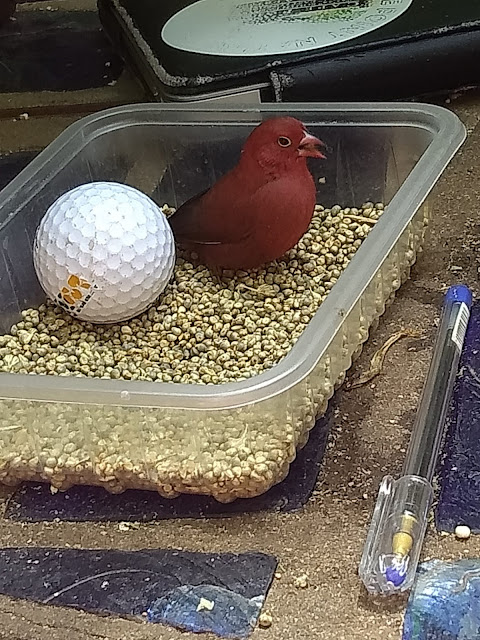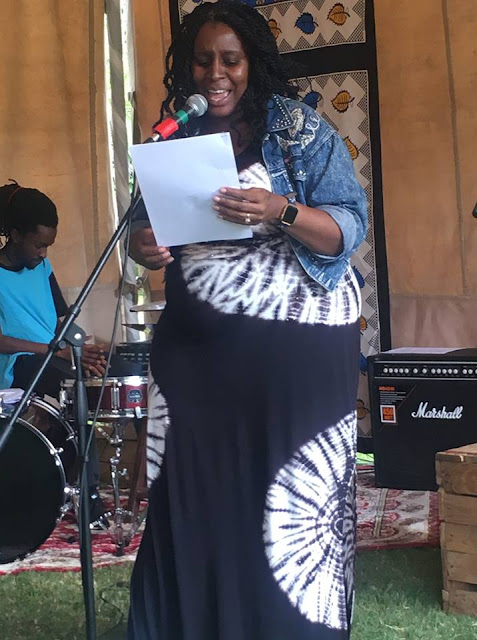By
Margaretta wa Gacheru (posted December 13, 2018)
You can spot
a Joseph Cartoon painting anywhere this industrious Banana Hill artist is
exhibiting his art. Currently, that is at the Red Hill Gallery where his
one-man show spans decades of his paintings.
Cartoon’s
distinctive style is colorful, flamboyant and filled with a dizzying array of
designs. He’s got everything from polka dots, strips and plaids to patterns
that are geometric, floral and checkered in his art. Often, he will pour many
of those shapes and designs into a single painting with each pattern painted in
a minimum of two colors.
And while
there might seem to be a sameness to Cartoon’s style of decorative painting, if
one looks closely, you will see that every artwork is different. The patterns,
colors and shapes are also distinct.
What is the
same in his art is that Cartoon rarely if ever lets go of the image of rural
women tightly integrated into a single work. His village women’s interaction on
canvas is practically surreal since they all seem to have a role to play except
that all but one tends to be intact. The others are visible as a head, a leg or
a hand. It’s a style that provokes a query: are there reasons for their
dismemberment or is he just playing around with painting body parts?
Either way,
it really doesn’t matter since one appreciates Cartoon for the increasing
complexity of his work. His early works, which Hellmuth Rossler-Musch began
collecting back in the 1990s is far less complex (some would say ‘busy’) than
the works he is painting now.
Nearly half
the artwork in the Red Hill Gallery show are early works of Cartoon’s, created
when the artist was just starting out. That was when he was still very much a
young ‘disciple’ of Shine Tani who at the time was heading the Banana Hill arts
studio.
Cartoon
arrived at the studio without a day’s experience of painting or drawing. But he
got along well with the artists working together at Banana Hill. So well that
they gave him the nickname ‘Cartoon’ because he was such a funny young guy.
Clearly the name stuck.
Cartoon stayed at the studio long enough to get a fair amount of mentoring from Shine and other artists who were part of Banana Hill artists in those early days, artists like Martin Kamunyu, Joe Friday, John Kimani aka Silver and many others. He got good enough to participate in a number of group shows with them.
Cartoon stayed at the studio long enough to get a fair amount of mentoring from Shine and other artists who were part of Banana Hill artists in those early days, artists like Martin Kamunyu, Joe Friday, John Kimani aka Silver and many others. He got good enough to participate in a number of group shows with them.
But Cartoon
is also an adept businessman. So he also got busy developing a wide array of
business prospects. In the course of it all, he also won a slew of awards,
including a two year art residency in the UK.
Fortunately,
Cartoon’s exhibition at Red Hill is up through January so you can come and
appreciate the intricacies of his art, especially the close attention he gives
to rural women who he clearly esteems or they wouldn’t be the centre of his
focus in so much of his art.
And if you
happen to arrive at Red Hill right when Cartoon is also there, you are bound to
hear illuminating stories about these industrious working women and how at
Chairman Mao used to say, “Women hold up half the sky.”






































